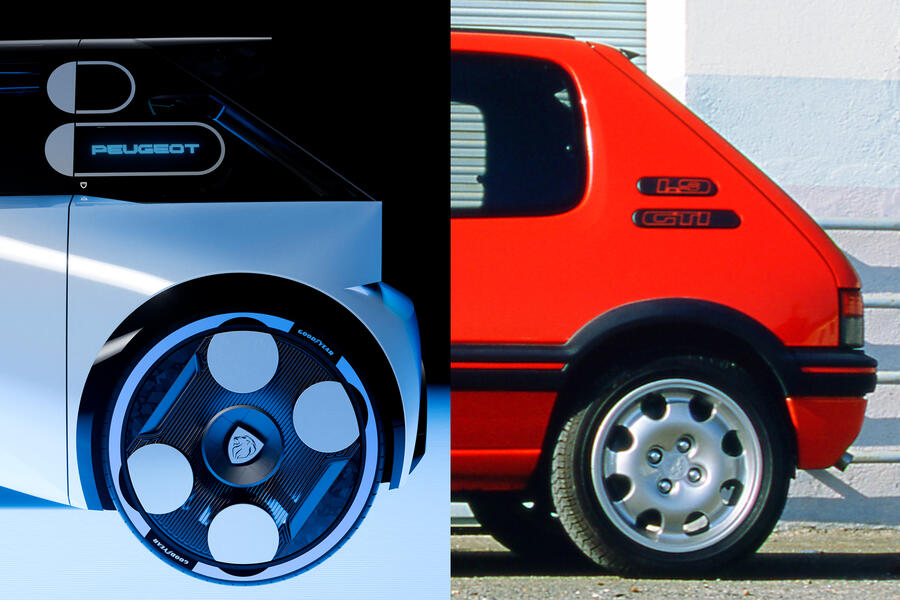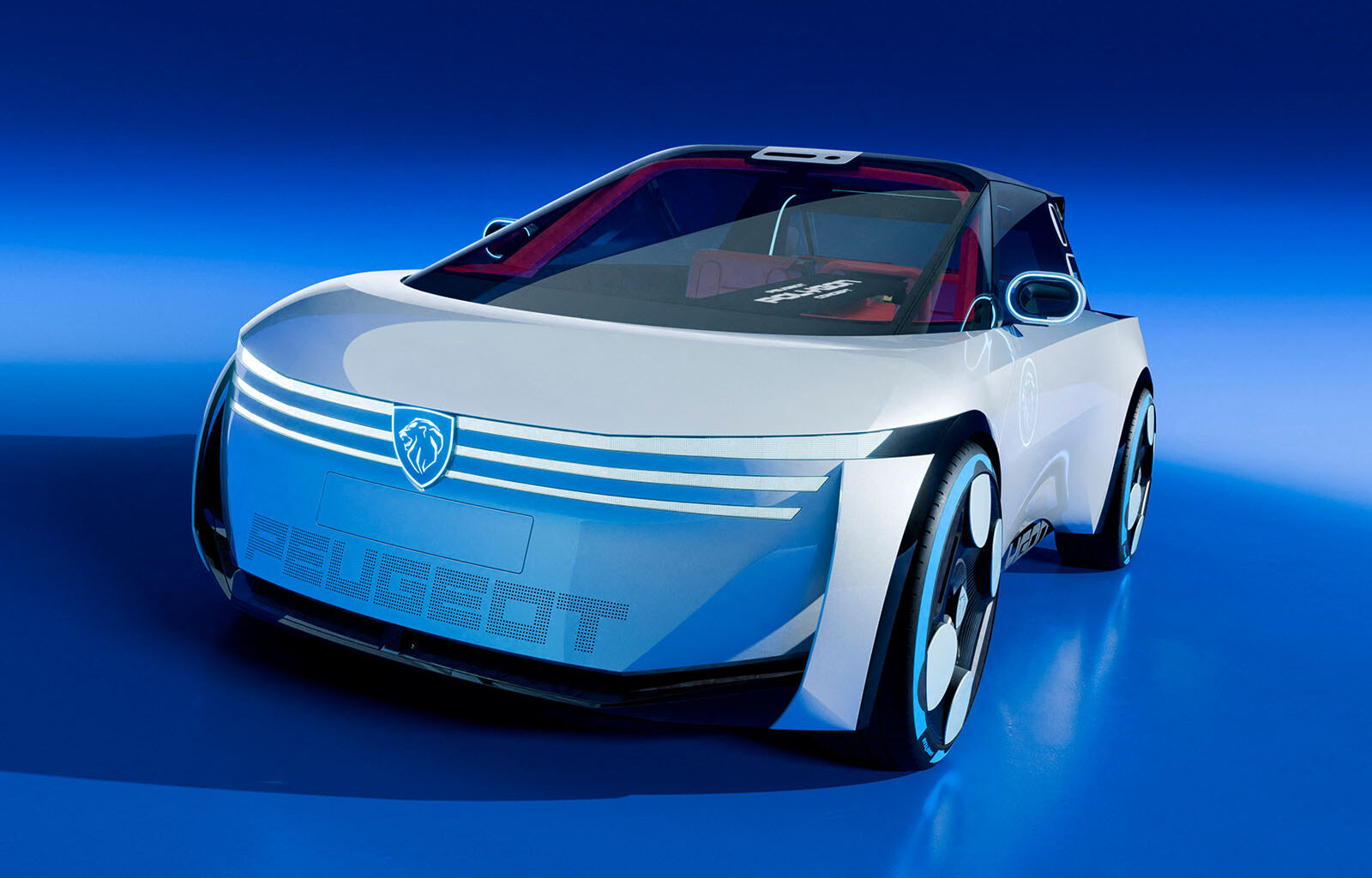The Polygon is short and squat with minimal overhangs and little room under the bonnet for a combustion engine, all of which suggests it has been conceived solely as an EV.
Its scuttle sits as low and as far forward as possible to improve visibility of the road ahead and to let in more natural light; the glasshouse stretches across the entirety of the Polygon’s roof and tailgate.
At the front end, the Polygon introduces a new interpretation of Peugeot’s ‘three-claw’ lighting signature, with LED light bars stretching across the width of the car.
The rear treatment is reminiscent of the Peugeot 205, with a flat-faced design and distinctive square brake lights. The C-pillar also references the 205 GTi, reimagining that car’s lozenge-shaped badges as LED lights indicating the Polygon’s state of charge.

Peugeot has yet to confirm when the next 208 will go into production but said the Polygon’s steer-by-wire technology is due in showrooms from 2027. This suggests the tech could be destined for the 208, which will be due for replacement at around that time.
The new 208 will be the first car to sit on parent company Stellantis’s STLA Small architecture, and the model is not set to offer a combustion engine option. Battery capacities for the platform will range from 37kWh to 82kWh, promising significant improvements in range compared with the 268 miles offered by today’s e-208.

